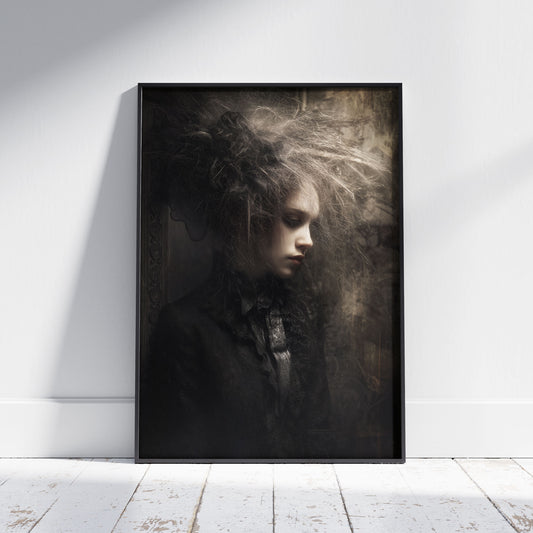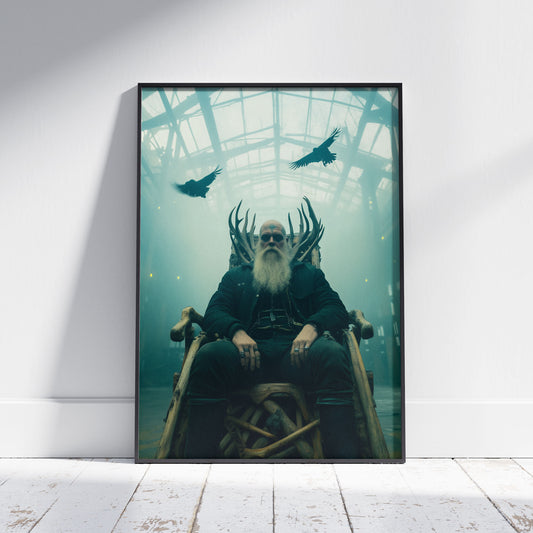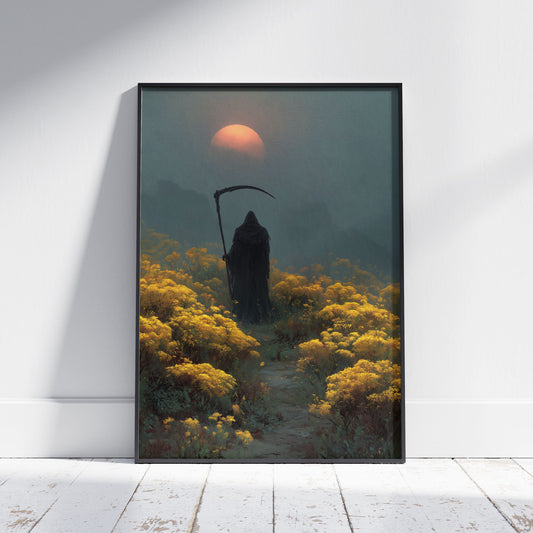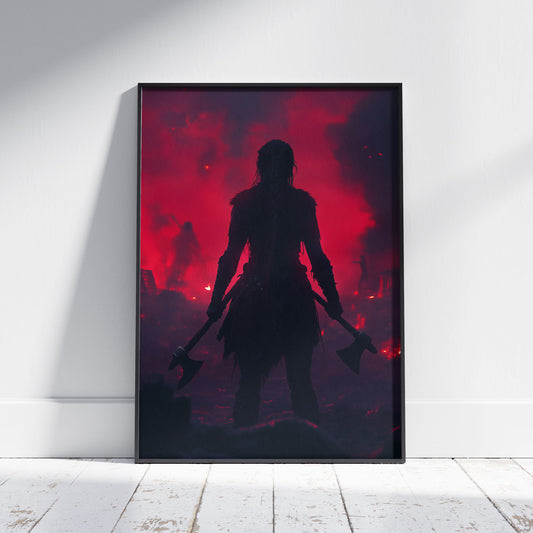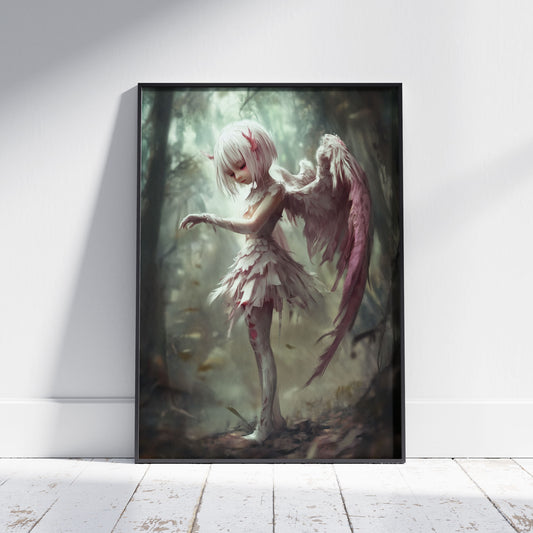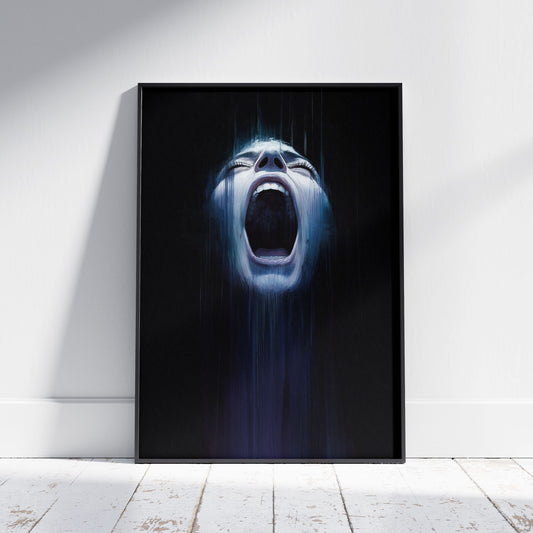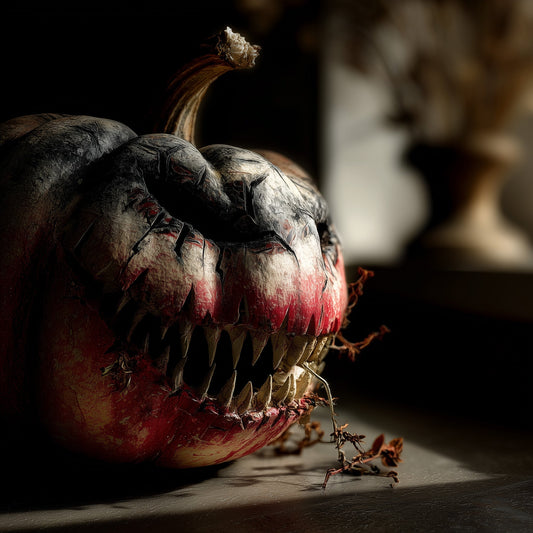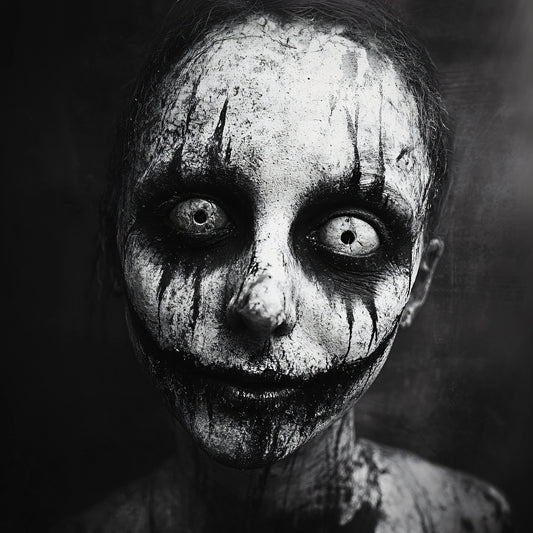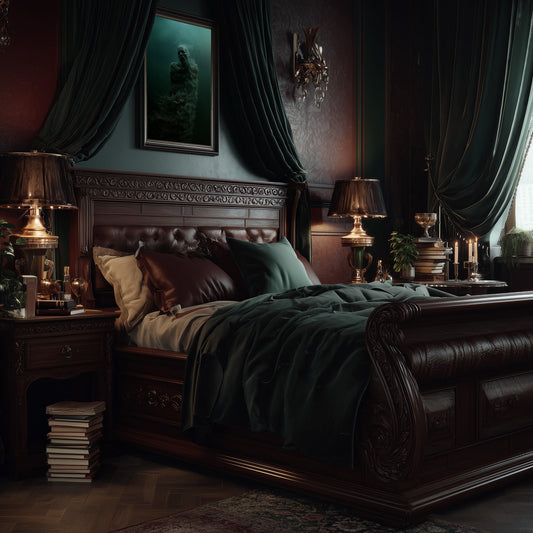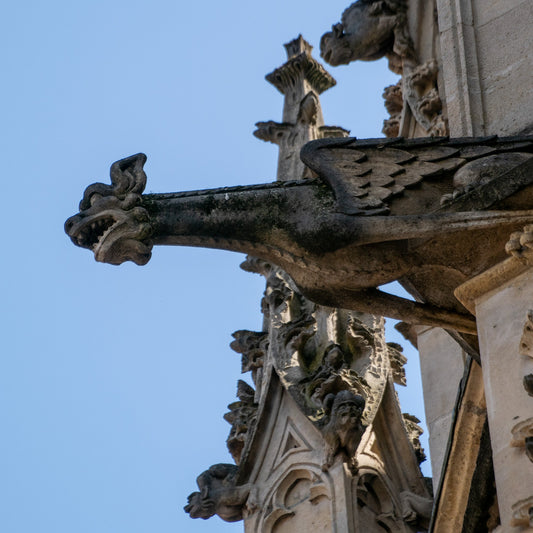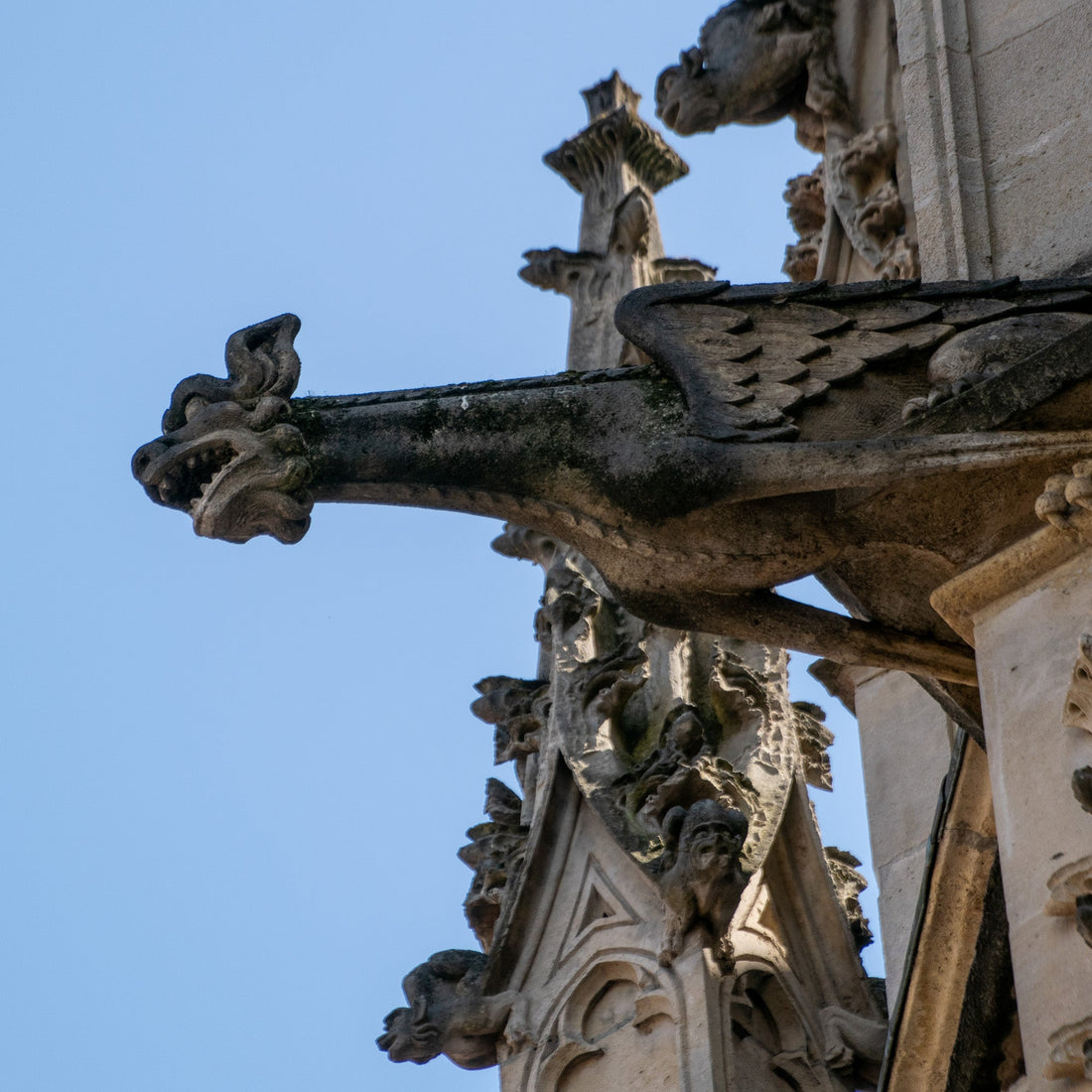
The Dragon of La Gargouille: Rouen's Most Famous Stone Monster (And Why It's Cooler Than Your Average Gargoyle)
ChristianShare
Ever looked up at a gothic cathedral and wondered about those fierce stone creatures glaring down at you? Well, let me introduce you to La Gargouille – the OG gargoyle that literally gave all other gargoyles their name. This stone dragon perched on Rouen Cathedral isn't just another decorative creature; it's the gargoyle that started it all. Yeah, you read that right – this grumpy-looking beast is basically the godfather of gothic wall art :)
The Legend That Started It All
Who Was La Gargouille?
La Gargouille wasn't always perched on Rouen Cathedral looking perpetually grumpy. According to medieval legend, this dragon was once a living, breathing terror that haunted the Seine River around the 7th century. Think of it as France's answer to the Loch Ness Monster, except with more fire-breathing and significantly worse table manners.

The story goes that this aquatic nightmare would:
- Devour ships sailing down the Seine
- Flood the countryside with its massive tail splashes
- Generally make life miserable for anyone trying to live peacefully in Normandy
Local fishermen probably had some choice words about their working conditions back then, but I digress.
Saint Romain: Dragon Slayer Extraordinaire
Enter Saint Romain, Archbishop of Rouen, who apparently had enough of this dragon's shenanigans. Armed with nothing but a crucifix and what I can only assume was an impressive amount of holy confidence, he decided to take matters into his own hands.
Here's where it gets interesting – Saint Romain didn't just kill the beast. Oh no, that would be too simple. Instead, he:
- Tamed the dragon using the power of his faith
- Made it carry its own funeral pyre (talk about adding insult to injury)
- Burned everything except the head and neck because apparently, those parts were fireproof
Ever wonder why medieval legends always have these oddly specific details? Me too.
From Living Terror to Stone Celebrity
The Birth of Gothic Architecture's Most Famous Feature
After the dragon's defeat, the people of Rouen decided to commemorate their victory in the most medieval way possible – by carving the beast's likeness into their cathedral. This wasn't just artistic expression; it was a power move that screamed, "Remember that time we totally dominated a dragon? Good times."

The word "gargoyle" itself comes from the Old French "gargouille," meaning throat or gullet. Makes sense when you consider these stone creatures were designed to:
- Channel rainwater away from cathedral walls
- Protect the building from water damage
- Look absolutely terrifying while doing it
It's basically functional art with a serious attitude problem.
Why La Gargouille Became the Template
What makes Rouen's dragon special isn't just its legendary backstory – it's how this particular design influenced gothic architecture across Europe. Once word spread about this fantastic stone beast, every cathedral wanted their own collection of grotesque guardians.
The characteristics that made La Gargouille iconic include:
- Elongated neck perfect for water spouts
- Fierce expression that could scare away evil spirits (and probably small children)
- Detailed craftsmanship that showed off medieval stone carvers' skills
- Functional design that actually served an architectural purpose
IMO, this is where gothic art really found its sweet spot – combining practical engineering with absolutely epic aesthetics.

The Art and Architecture Behind the Beast
Gothic Craftsmanship at Its Finest
Creating La Gargouille wasn't a weekend DIY project. Medieval stone carvers were essentially the special effects artists of their time, and they took their work seriously. The level of detail in these carvings is honestly mind-blowing when you consider they were working with basic tools and pure skill.
The technical aspects that make La Gargouille a masterpiece:
- Stone selection: Limestone that could withstand centuries of French weather
- Carving technique: Hand-chiseled details that remain sharp after 800+ years
- Water engineering: Channels carved to direct flow without damaging the sculpture
- Positioning: Strategically placed for maximum visual and functional impact
The Psychology of Gargoyle Placement
Here's something that blows my mind – the placement of gargoyles like La Gargouille wasn't random. Medieval architects understood visual psychology way before it became a formal field of study. These creatures were positioned to:
- Create dramatic silhouettes against the sky
- Draw the eye upward toward heaven (subtle, right?)
- Establish a sense of protection around the sacred space
- Provide visual interest from multiple viewing angles
Walking around Rouen Cathedral, you start to appreciate how these stone guardians create an entire narrative landscape across the building's facade.
La Gargouille's Influence on Modern Gothic Art
From Medieval Walls to Contemporary Collections
Fast-forward to today, and La Gargouille's influence is everywhere in gothic and dark art. You can trace a direct line from this medieval dragon to modern:
- Gothic wall art featuring dramatic creatures and architectural elements
- Dark fantasy illustrations with similar fierce expressions and detailed textures
- Steampunk designs that blend medieval aesthetics with industrial elements
- Horror movie creature design (seriously, compare La Gargouille to some classic movie monsters)
Why This Ancient Design Still Resonates
There's something about La Gargouille that speaks to our modern fascination with dark, whimsical art. Maybe it's the way this creature embodies both protection and menace, or how it represents humanity's eternal struggle with the forces of nature and chaos.

The psychological appeal includes:
- Archetypal power: Dragons represent primal fears and conquered challenges
- Architectural drama: The way these figures interact with building spaces
- Artistic rebellion: Gothic art has always pushed against conventional beauty standards
- Historical continuity: A tangible connection to medieval craftsmanship and storytelling
Visiting La Gargouille Today
What to Expect at Rouen Cathedral
If you're planning a pilgrimage to see the original La Gargouille (and honestly, why wouldn't you?), Rouen Cathedral delivers on every level. The Notre-Dame de Rouen isn't just home to this famous gargoyle – it's a gothic architecture masterpiece that inspired everyone from Claude Monet to Tim Burton.
Pro tips for your visit:
- Best viewing times: Late afternoon when the light creates dramatic shadows
- Bring binoculars: Some of the finest details are way up high
- Check the weather: Ironically, rainy days show these water spouts in action
- Allow extra time: You'll want to see the other gargoyles and architectural details
Photography and Art Inspiration
La Gargouille has become a muse for countless artists and photographers. The interplay of light and shadow across its carved features creates different moods throughout the day. Whether you're sketching, painting, or just soaking in the atmosphere, this stone dragon offers endless inspiration.
The visual elements that make it so photogenic:
- Textural contrast between smooth and rough stone surfaces
- Dynamic angles that change dramatically based on viewing position
- Weather interaction – rain, snow, and sunlight all create different effects
- Architectural context – the way it relates to the surrounding gothic elements
The Legacy Lives On
Modern Interpretations and Collectibles
Today's gothic art scene owes a massive debt to La Gargouille and its medieval contemporaries. From high-end art prints to quirky home decor, the influence of Rouen's famous dragon appears in countless modern interpretations.

Contemporary artists draw inspiration from La Gargouille for:
- Wall art collections featuring architectural gothic elements
- Sculpture and 3D art that reimagines medieval creatures
- Digital art that blends historical and futuristic aesthetics
- Home decor that brings cathedral drama to living spaces
The Enduring Appeal of Gothic Guardians
FYI, if you've ever wondered why gargoyles and gothic creatures remain so popular in modern art and design, La Gargouille provides the answer. This isn't just about medieval superstition or architectural necessity – it's about human creativity transforming fear into beauty.
The timeless appeal comes from:
- Emotional complexity: These creatures embody both terror and protection
- Artistic mastery: Medieval craftsmanship that still impresses today
- Narrative power: Every gargoyle tells a story
- Aesthetic rebellion: Gothic art challenges conventional ideas of beauty
Why La Gargouille Matters in Today's Art World
Here's the thing – in our digital age of mass-produced everything, La Gargouille represents something precious: handcrafted artistry with genuine soul. This stone dragon survived wars, revolutions, weather, and time itself because medieval artisans created something truly exceptional.
Whether you're an art collector, a history buff, or just someone who appreciates the darker side of creativity, La Gargouille offers a masterclass in how functional art can transcend its original purpose to become something legendary.

The next time you see a gothic poster, a gargoyle sculpture, or any piece of dark architectural art, remember – you're looking at the artistic DNA of a stone dragon that's been inspiring creators for over a millennium. Not bad for a creature that started as a river monster with anger management issues :/
The bottom line? La Gargouille isn't just a gargoyle – it's the ultimate example of how medieval artists turned practical architecture into enduring art that continues to influence and inspire. And honestly, that's pretty amazing.

